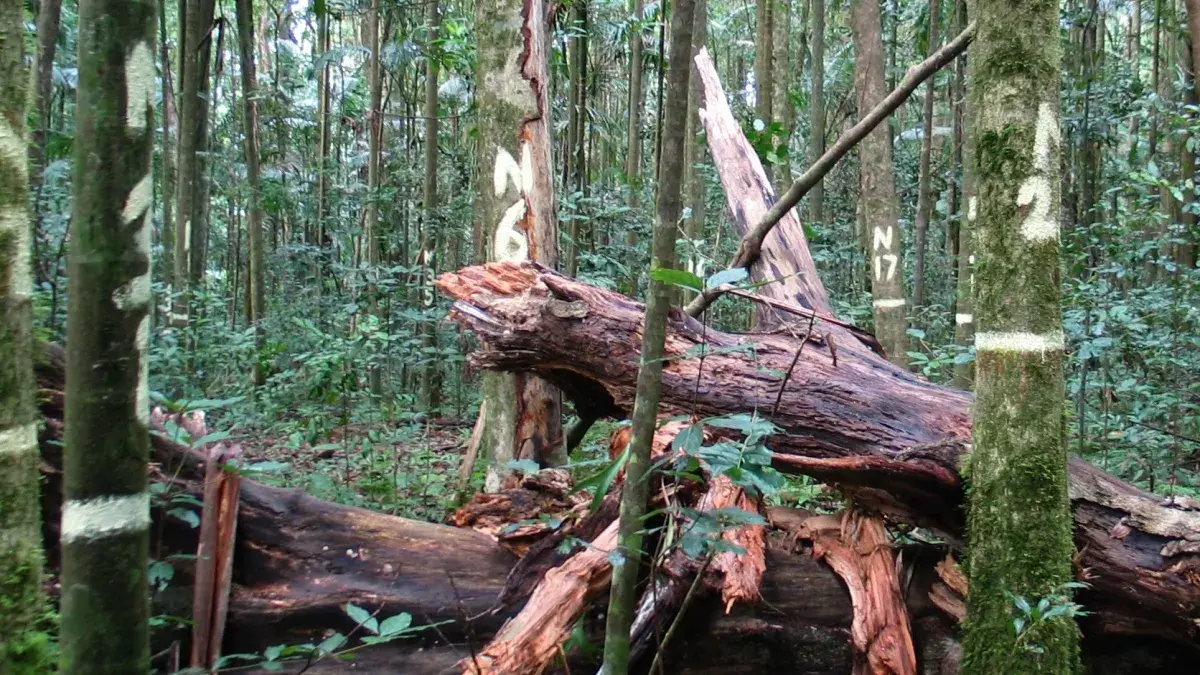Increased tree deaths caused by climate change have resulted in the vegetation of some of the world’s oldest and most diverse tropical rainforests switching from being globally important carbon sinks to sources of emissions, researchers say.
The findings suggest other tropical rainforests could undergo similar changes, highlighting the need for decisive actions on climate change to safeguard these important stores of carbon and biodiversity.
Climate effects
An international team, led by researchers from the Australian National University, the University of Edinburgh, and the French National Research Institute for Sustainable Development, used uniquely long-term data on some 11,000 trees to analyse the effects of climate change on their capacity to gain and store carbon.
Since 1971, scientists have tracked the growth of trees in Australian rainforests – which span some one million hectares – at 20 forest sites in the State of Queensland, north-eastern Australia.
Dying trees
The team’s findings reveal that increased extremes of high temperature and drought are responsible for more trees dying, leaving their trunks, branches and leaves – known as above-ground biomass – to become a net source of carbon to the atmosphere, from around the year 2000.
The rainforests lost close to a thousand kilograms of carbon per hectare from their above-ground biomass each year between 2010 and 2019, the study found. In contrast, the carbon sink capacity of the rainforest was at its highest between 1970 and 1980, when each hectare absorbed a similar amount of carbon each year through biomass growth. This net gain declined gradually until a transition from sink to source took place, the team says.
Biomass levels
Previous studies have predicted that the ongoing increase in atmospheric carbon dioxide levels will also stimulate biomass growth in tropical forests, storing more carbon in these forests, helping to offset the effects of climate change.
However, the team did not find any clear evidence of a growth in biomass due to increasing carbon dioxide levels, as had been expected. This suggests that earlier estimates may have overestimated the capacity of tropical forests to continue to act as net absorbers of carbon from the atmosphere in the coming decades.
Rainforest futures
The changes these forests have undergone show what the future could hold for more extensive rainforests found elsewhere in tropical America, Africa and Asia without urgent action to reduce emissions, they add.
Damage caused by cyclones – which may become increasingly severe under climate change – also reduced the Australian rainforest’s capacity to store carbon, with these effects adding to those caused by increasing heat and drought. This suggests other tropical forests regularly impacted by cyclones could also see greater damage as the climate warms.
The research, published in the journal Nature, also involved the Commonwealth Scientific and Industrial Research Organisation (CSIRO) (Australia), University of Maryland (USA), CREAF (Spain), and Western Sydney University. It received funding from the Royal Society, the Commonwealth Scientific and Industrial Research Organisation (CSIRO) and the European Union's Horizon 2020 programme.


